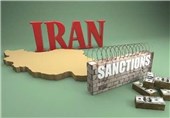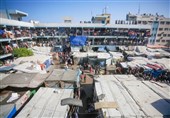Arab Governments Debt Rise Sharply in 2015
TEHRAN (Tasnim) – Borrowing by leading Arab governments has more than doubled last year and is forecast to remain high in 2016, Standard and Poor’s ratings agency reported.
The debt taken by 11 Arab nations rated by the agency, including the oil-rich (Persian) Gulf Cooperation Council states, shot up to $143 billion last year from $70.6 billion in 2014, S&P said in a report on Tuesday.
Last year’s figure includes $30 billion debt by Iraq which was added to the list for the first time.
The governments of the PGCC states – Bahrain, Kuwait, Oman, Qatar, Saudi Arabia and the United Arab Emirates – borrowed $40 billion last year, including $26 billion by OPEC heavyweight Saudi Arabia, the agency said.
Egypt topped the list with $44 billion borrowed in 2015, it said, AFP reported.
S&P projects that borrowing by the same Arab nations will drop only 6 percent to $134 billion, of which the PGCC share will be around $45 billion.
The 2016 projections are based on the assumption that PGCC countries will draw down on their huge fiscal reserves to finance budget deficits resulting from low oil revenues.
The gross total commercial debt by Arab governments is forecast to reach $667 billion by the end of this year, up $85 billion on 2015, the agency said.
A report by Kuwait Financial Centre (Markaz) last month forecast that the public debt of the PGCC states will double by 2020 as they seek to finance budget deficits caused by sliding oil prices.
After having posted massive deficits of $160 billion last year and faced with a $159-billion deficit in 2016, the PGCC states’ debt is expected to rise to 59 percent of the gross domestic product, the report then added.
In contrast, PGCC states posted a combined surplus of $220 billion in 2012.






